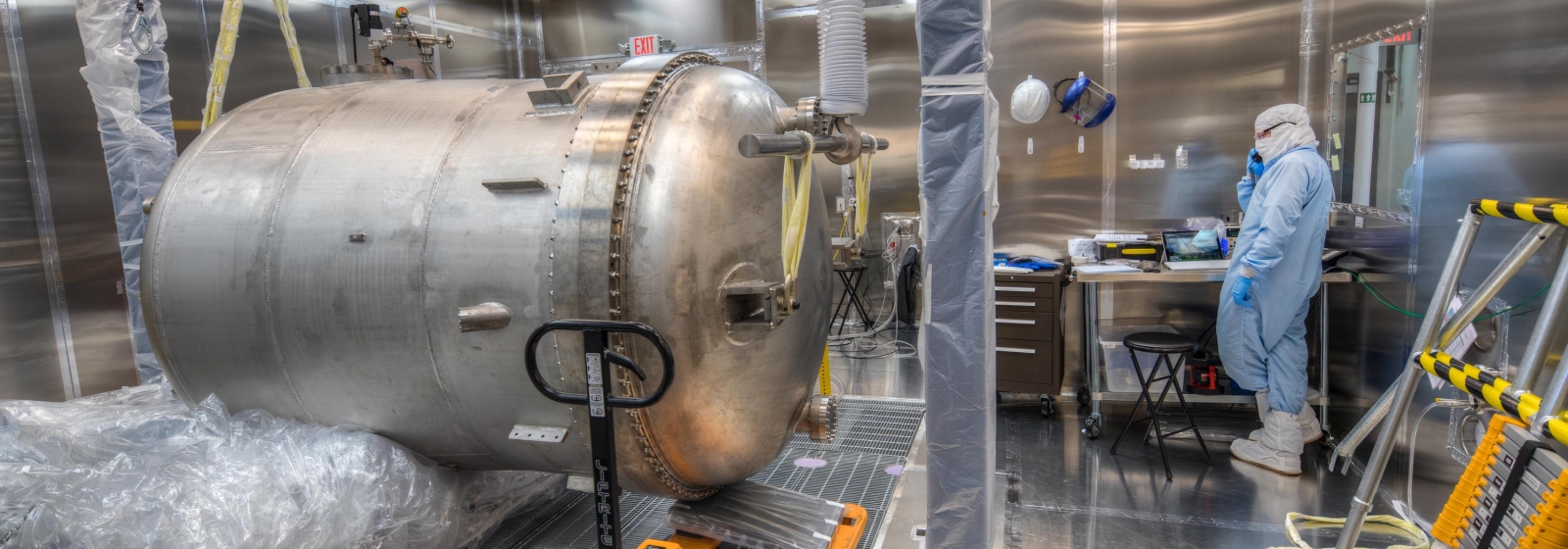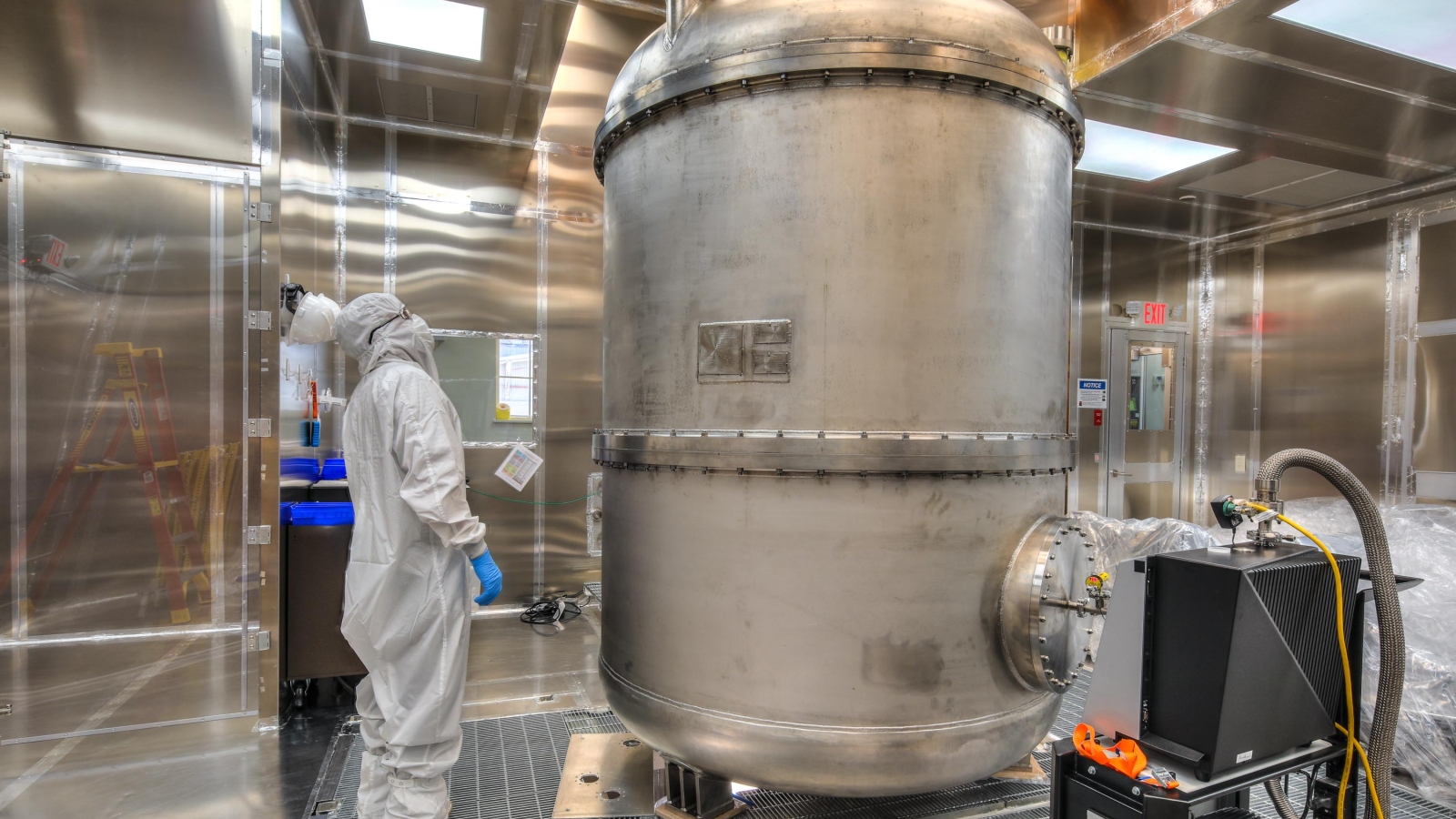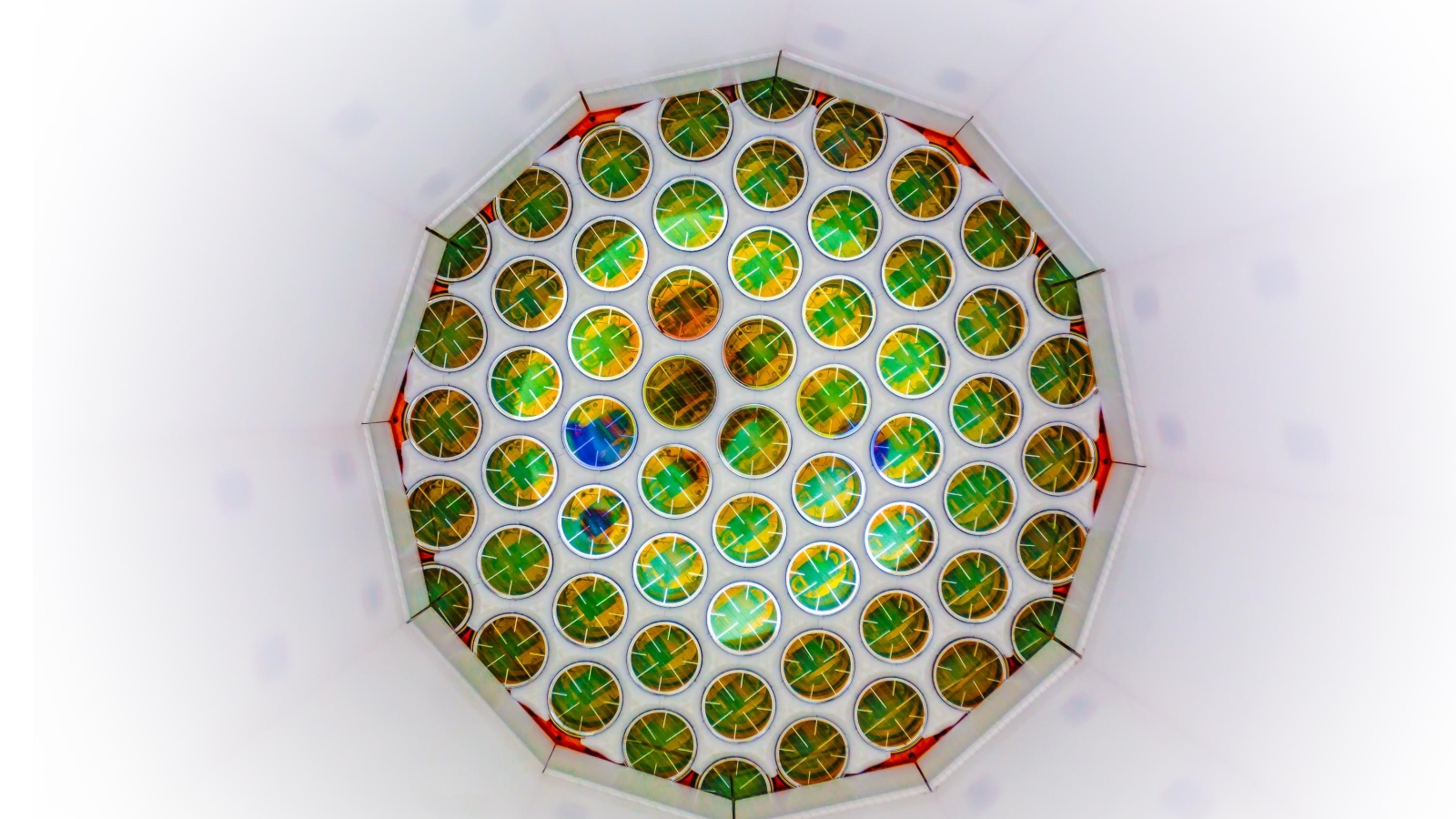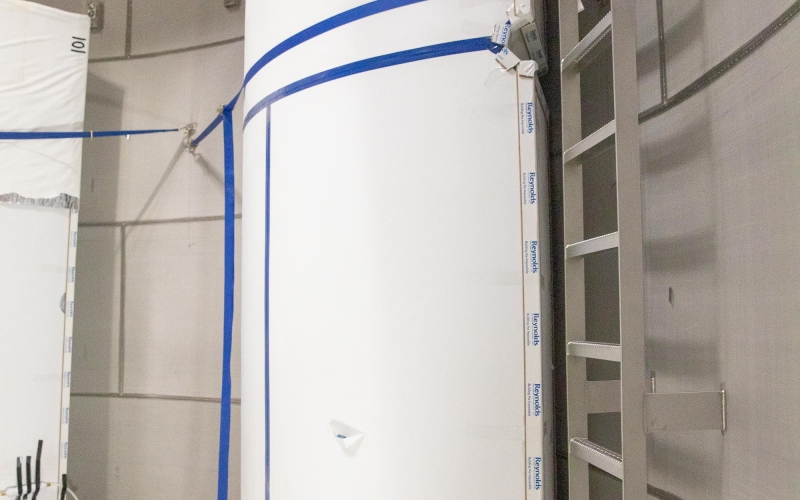In 2013, the Large Underground Xenon detector (LUX) at Sanford Underground Research Facility (Sanford Lab) was named the most sensitive dark matter detector in the world. In the global search for Weakly Interacting Massive Particles (WIMPs), a candidate for dark matter, LUX was preforming exceedingly well.
So why did the collaboration decommission LUX in 2016? And why are they building a larger detector—LUX-ZEPLIN (LZ)—in it's place?
"The search for dark matter is a numbers' game," said Markus Horn, Sanford Lab research scientist and member of the LZ collaboration. "We're waiting for a dark matter particle or weakly interacting massive particle (WIMP) to interact with the xenon atoms in the detector. The likelihood of such an interaction depends on how many xenon atoms we have."
By sizing up the experiment, researchers increase their chances of witnessing rare WIMP interactions with a larger volume to hold xenon. Horn said that, while the size of the detector isn't the only way researchers are enhancing the search, it's a good starting point.
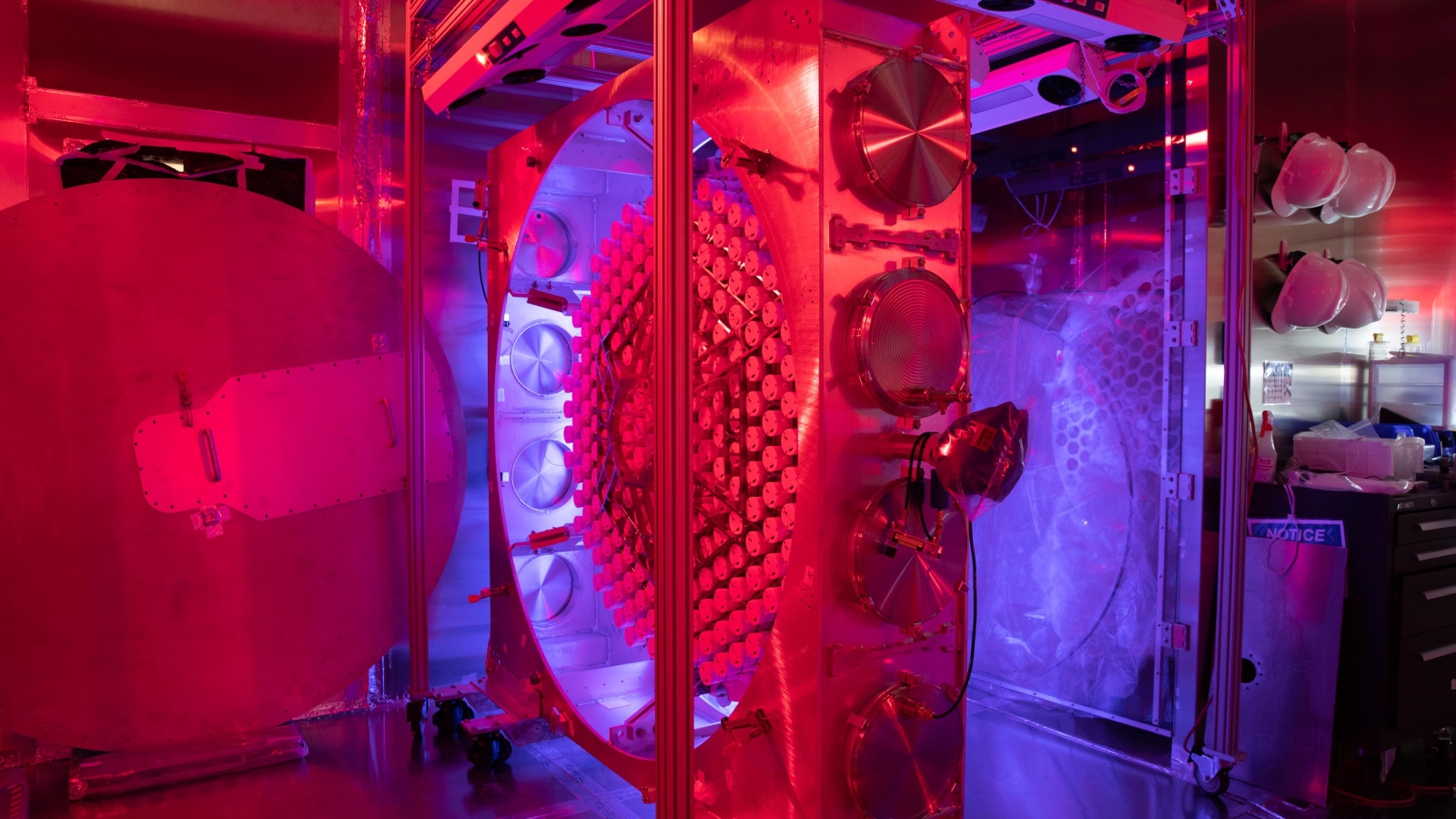
"In addition to the size, we are improving every aspect of the experiment that we can," Horn said.
To transport and store the xenon, LUX previously used eight compressed gas cylinders. LZ will use 200 of these cylinders stored in a newly outfitted room outside the laboratory underground.
More xenon means a larger, more complex circulation system. Previously, the pumps exchanged 25 liters of purified xenon gas per minute. The small pumps will be replaced with large compressors capable of circulating xenon efficiently. Now, that number will be closer to 200 liters per minute.
A xenon tower outside the water tank will allow xenon to be heated to its gaseous form, purified, then re-liquified before it is reintroduced into the detector again.
The signal readouts for all photomultipliers and sensors amount to over 1000 cables which will run out of the detector and into computer racks. Also, the voltages required to create the electric field over the increased detector size are significantly higher.
"Overall, there are far more challenges, more sub-systems and simply far more pieces to this experiment - all bigger and better than before”, said Horn.
